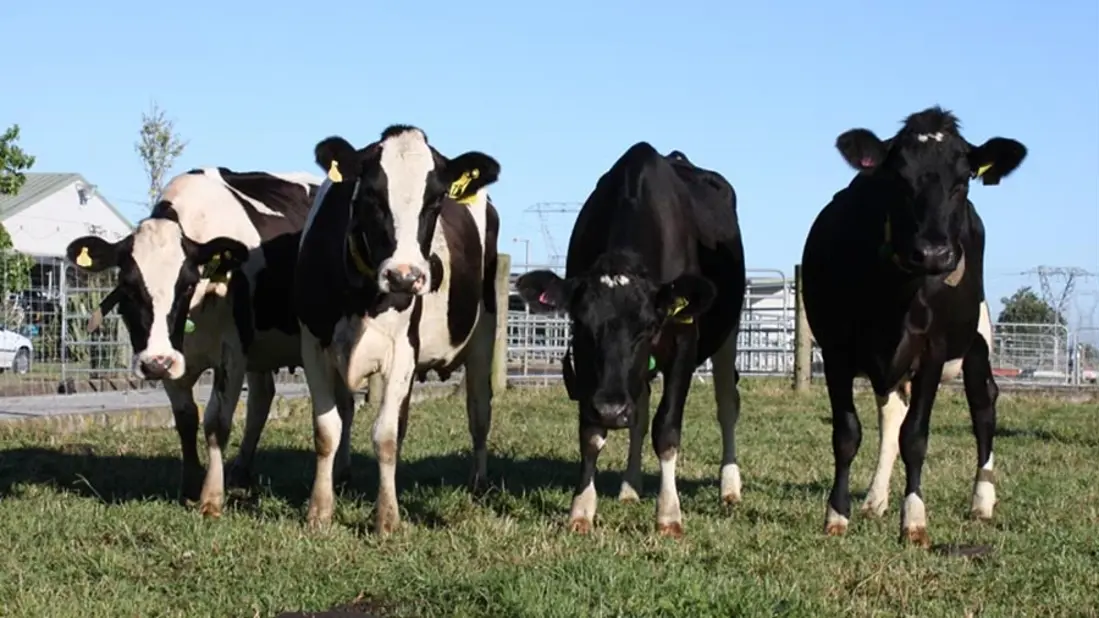Training Heifers
3 min read
Heifers, or young female cows, require careful planning and patience when introducing them to the milking herd. The page you're reading details steps to minimise stress and enhance milk production during this transition. Key aspects include providing a consistent sequence of events, ensuring positive experiences, and multiple introductions to the new environment. Training, such as handling udders or exposure to milking machinery, helps them get comfortable. Heifers may need extra care after calving to prevent bullying and to manage any udder conditions. Selecting sires that will yield smaller calves can also ease this transition.
Heifers are valuable stock and their introduction to the milking herd should be planned. Time and patience is required but will result in time saved in the long run.
Pre-calving handling and experience of the milking environment can reduce adverse reactions of heifers when they join the milking herd.
The benefits of training heifers include:

Young heifers
Heifers need:

Heifer training gate
Heifers are valuable stock and their introduction to the milking herd requires time and patience.
This is more difficult than training heifers in a herringbone although the same principles apply.
Stage 1: Expose heifers to a slowly rotating milking platform. Leave the machine off.
Stage 2: Have heifers on a slowly rotating platform with some gently handling of udders. When the heifers are settled, turn the machine on.
Stage 3: Go on to the drench walkway with your back to the cows. Then face them as they grow more settled.
Stage 4: When you think the heifers are ready, try a practice drenching. Use a pleasant tasting molasses drench and do not persiste with reluctant heifers.
It is best to expose heifers to the milking routine gradually. The following is a suggested method for familiarising heifers to the milking process. While doing this it is also worthwhile introducing them to drenching.
Stage 1: Put the heifers into the yard and let them more-or-less find their way quietly out through the exit gates. Leave the machine off.
Stage 2: Shut the exit gate and line them up as if for milking. Leave the machine off.
Stage 3: Handle them gently around their udder. Turn on the milking machine so they get used to the noise. During this process, walk slowly and quietly down the drenching race in front of the cows’ heads from yard end to exit but with your back turned towards them. That way they are less likely to be frightened.
Stage 4: Face them more and as they grow more settled, try using a drench made up mainly of molasses - more pleasant tasting than the usual medicines. Do not persist with drenching if a particular heifer becomes agitated, leave her until another time.
It takes heifers about 2 weeks to establish a quiet, reliable response to milking once they enter the main herd. Heifers that have had a difficult calving take longer to settle into the milking routine than heifers with easy calvings.
Heifers will generally be at the bottom of the social hierarchy and are physically smaller than older cows but you can minimise bullying by ensuring cows have sufficient space on tracks and in the yard. In large herds, separate mobs so heifers are not with dominant cows.
Other tips:
Now’s the perfect time to check in, plan, and set up for a strong season. We’ve pulled together smart tips and tools to help you stay ahead all winter long.
Whether you prefer to read, listen, or download handy guides, we’ve got you covered with trusted tools to support your journey every step of the way.
Put our proven strategies and seasonal tools to work. Boost production, support animal health and watch your profits hum.
Tools that are backed by science, shaped by farmers and made for this season.
That’s Summer Smarts.